Table of Contents
Aponogeton Ulvaceus : A Quick Summary
Aponogeton Ulvaceus, commonly known as the “ULVA,” is a species of aquatic plant native to the tropics. It is known for its bright green, narrow leaves and delicate, white flowers. It is commonly used in freshwater aquariums and is known for its ability to thrive in low light conditions.
Aponogeton Ulvaceus Overview
Aponogeton Ulvaceus are beautiful bulb plants that come from Madagascar. With light green translucent leaves twirled delicately, they make for interesting additions to large tanks, and could even act as a solitary centerpiece because of its ability to grow more than 40 leaves, up to around 1ft in length each!
It also takes quite a bit of space, as a single root can easily grow up to a feet and a half in wideness. This plant is relatively hardy and can thrive in a wide range of water conditions, so for beginners looking for a simple yet elegant plant to put in their large fish tanks, this care guide will not only help you care for one, but it’ll also help you decide on whether or not the aponogeton ulvaceus, or any other bulb plant is a good fit for your tank.
| Information Chart | Aponogeton Ulvaceus |
|---|---|
| Scientific Name: | Aponogeton ulvaceus |
| Family: | Aponogetonaceae |
| Care Level: | Easy |
| Growth Rate: | fast |
| Maximum Size: | 12 x 19.7 inches |
| Minimum Tank Size: | 10 gallons |
| Water Conditions: | 72° – 82° |
| Lighting: | 10-watt floodlights |
| Propagation: | Seeds or runners |
| Placement: | Middle and background |
Aponogeton Ulvaceus Appearance
Aponogetons are beautiful plants that may genuinely help create a tranquil and flowing atmosphere in any aquascape. Aponogetons, with beautiful light green, translucent leaves that twist into a fluted form, provide a luxuriant background for your aquarium dwellers, allowing them to stand out.
An aponogeton ulvaceus flower root may generate up to 40 leaves, each of which can grow to reach more than 50 cm in length. One root can support up to 40 leaves. Aponogeton bulb plants may grow up to 60 cm wide, which is rather astounding for such a tiny plant.
Small white flowers will bloom on the Aponogeton if it is allowed to expand above the waterline, and they will stand out against the background of the rippling leaves.
Each bulb develops over 40 leaves, almost a foot long on average. The plants that grow horizontally and vertically eventually reach approximately 20 inches (50 cm).
When the petioles of aponogeton are all the same length, the base of the leaf blades tapers gradually as they get more significant, and the edges of the leaf blades are wavy. Not to mention that they may seem reddish when they are subjected to high-intensity lighting.
Variety of Aponogeton Ulvaceus
You may find Aponogeton bulbs in a variety. There are many different flower varieties, and it is entirely feasible to determine their kind and provenance before they have sprouted.
Aponogeton Ulvaceus Size
Aponogeton ulvaceus is a submerged aquatic plant belonging to the Aponogetonaceae family. It grows in freshwater. It has a tiny cone-shaped, somewhat hairy rhizome about 30 mm (114 in) in diameter and rises from the ground.
Aponogeton Ulvaceus Care and Tank Set-Up
Once you’ve determined the proper tank size for this species, the rest of the process should be straightforward. The circumstances in your Aponogeton tank must be comparable to those that the plant is accustomed to in the wild. Once you’ve been able to mimic its native environment, you’ve solved half of your problems.
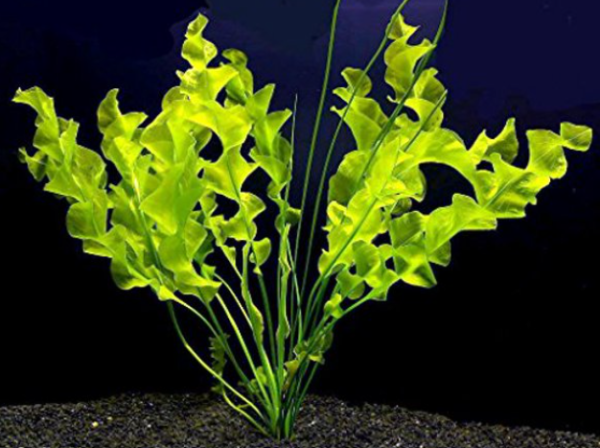
You may prepare your aponogeton flower for the rainy season by allowing it to rest for a short period. However, there is no compelling need to give aponogeton plants a rest if they are maintained in aquariums. However, it is vital to fertilize your plant regularly because the nutrients contained in the aponogeton’s bulb begin to deplete with time.
Your aquarium will be filled with the sincere and welcome presence of Aponogeton Ulvaceus flower plants. Furthermore, since they are beginner-friendly, anybody who is a plant fan may confidently plant them in any tank.
Aponogeton Ulvaceus Tank Size and Specifications
The Ideal Aquarium Conditions for Bulb Plants
Generally, plants thrive in tanks with a pH of 6.5-7.5, with the exception of aponogeton capuroni, nuphar japonica, etc. In terms of temperature, bulb plants are tropical species, which means that they enjoy temperatures ranging from 22-28°C. Some are able to tolerate cooler temperatures, but assuming that you’ll be keeping bulb plants with tropical fish, you should stick with the recommended range.
Optimum Tank Size for Aponogeton Ulvaceus
The recommended tank size for Aponogeton Ulvaceus is 10 gallons.
Tank Shape for Aponogeton Ulvaceus
Aponogeton ulvaceus is a fast-growing plant that will require a big tank to accommodate its growth.
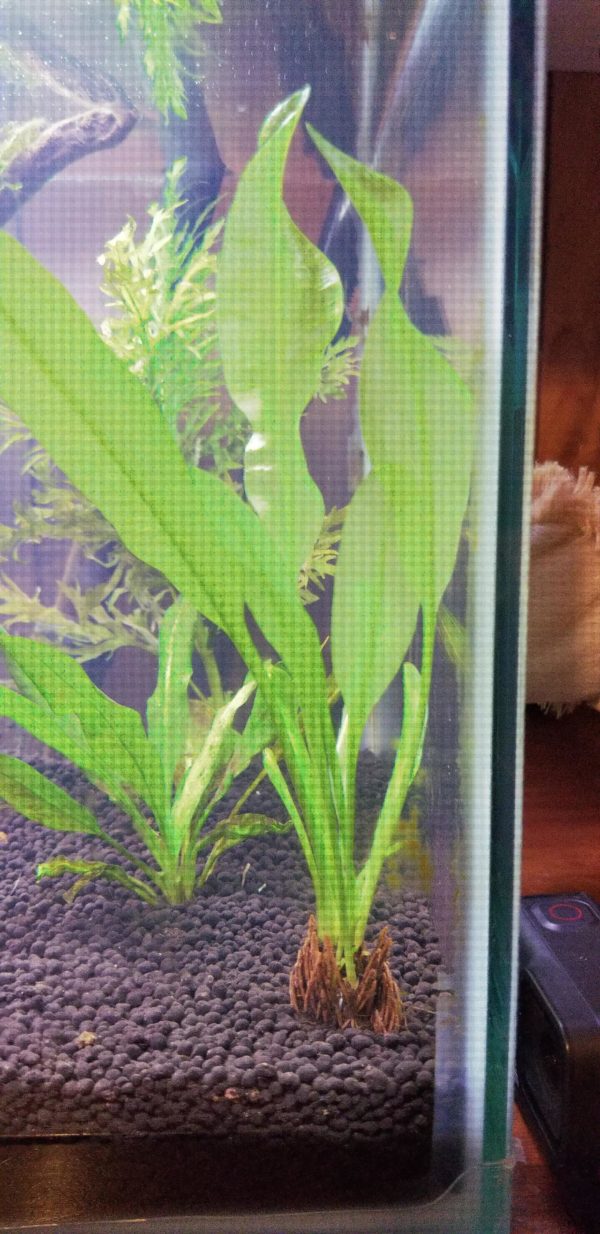
To get them started, we suggest that you purchase a 10-gallon tank at the very least. You might think it’s a bit of a stretch, given that perhaps the bulbs start small but soon grow in size.
Filter Type
The under-gravel filter is the most widely used biological filter for Aponogeton ulvaceus. It is a low-cost, dependable, and very successful method of treatment. In reality, an under-gravel filter is simply a plastic plate placed over the bottom of the aquarium.
Substrate
Substrates are some of the most ignored aspects of fishkeeping. For fish, they’re simply places for fish to scour and play in. For plants, however, substrates are both their home and their source of food. Especially for bulb plants with depleted nutrients, substrates with added nutrients help reduce the need to consistently dose liquid fertilizers.
If you don’t want to change your current substrate, you could still purchase fertilizer tablets or capsules that you can place near the roots of your plants. These slow release fertilizers will often last you several months before needing to be replenished.
This is a perfect choice for aquarists who already have an established tank, as replacing the whole substrate could wreak havoc on the biological filtration of the system, which, while not necessarily harmful for the plants, could be quite fatal for the fish.
Plant the sprouted aponogeton flowers in the substrate, being sure to bury the roots of the plants as much as possible. Maintaining the narrower end of the non-sprouted aponogeton out of the substrate is preferable.
How Many Aponogeton Ulvaceus in A 5-Gallon Tank
One Aponogeton in a 5-gallon tank.
Water Parameters for Aponogeton Ulvaceus
Water Temperature
The ideal water temperature for Aponogeton Ulvaceus is 68 to 72°F.
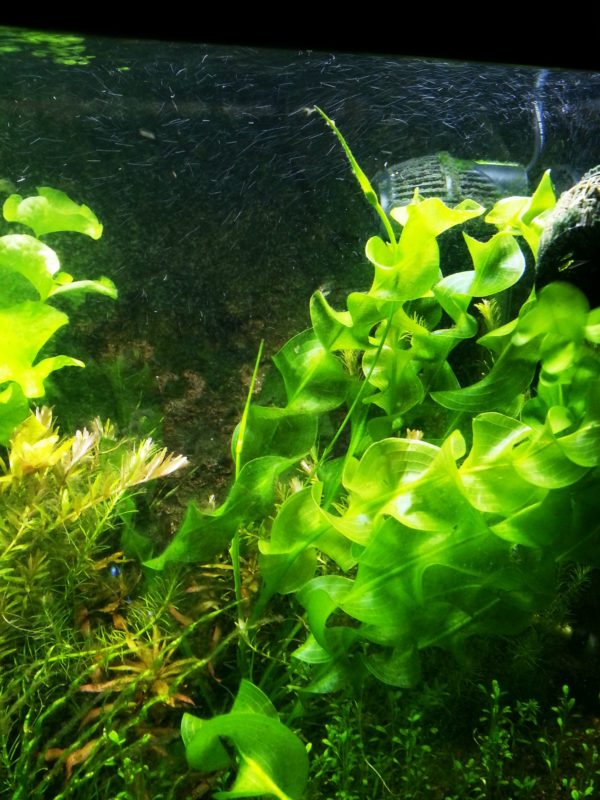
Ph Level
The perfect water pH level for Aponogeton Ulvaceus is 6.5-7.5
Water Hardness
Not critical
Aponogeton Ulvaceus Tank Landscape
Flowering Aponogeton ulvaceus plants have the potential to take over your aquarium and constitute a hazard to your fish. Maintain your aponogeton bulb plants by regularly pruning their stems as close as feasible to the bulb. To mention the fact that regular pruning will assist in minimizing the amount of rot in your aquarium to a bare minimum.
Decorations For Aponogeton Ulvaceus Tanks
The Aponogeton Ulvaceus plant gives your tank a lush look that is wonderful to look at. This appearance is similar to the natural habitat of many aquarium species, notably the Betta fish, which is why it is also referred to as the Betta Bulb.
Lighting For Aponogeton Ulvaceus Tanks
As mentioned before, less lighting is usually better for beginners, as higher lighting also means having to prune your bulb more often, while also requiring additional feedings as a consequence of rapid growth. This doesn’t mean, however, that you can get away with having ridiculously low wattage LEDs, as this will fuel algae growth as well. 10w LED floodlights are the minimum recommended lights for 10 Gallon tanks. You can get away with as little as 6 hours of light with this setup.
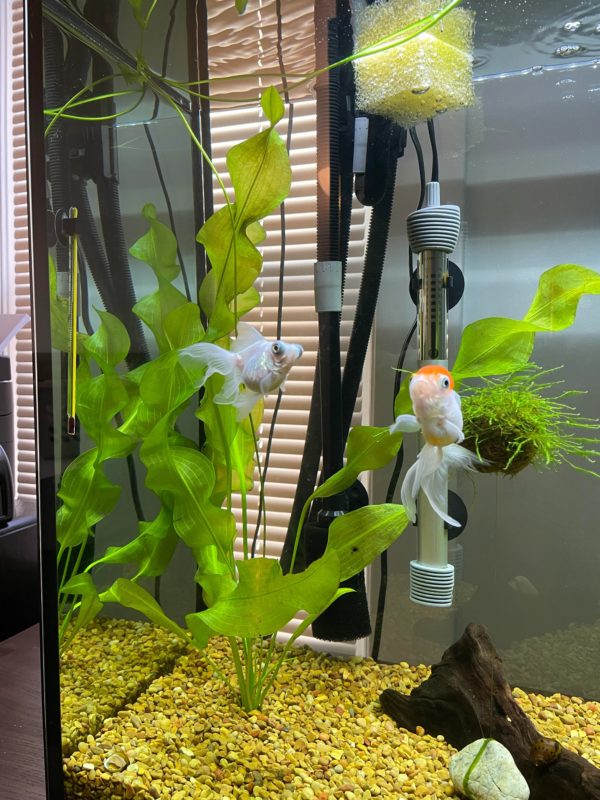
LED floodlights with 6,700k color temperatures are cheap alternatives to dedicated aquarium lights. A lot of aquarists have had great success with them, so if you don’t have the budget for quality aquarium lights, you can get away with an LED floodlight. Combine this with off-the-shelf NPK and quality liquid carbon products, and you can grow even the most demanding plants!
If you want an even simpler setup, you can also use T5s bulb, though I wouldn’t recommend it, as T5s have to be replaced often as their intensity quickly diminishes. You would also need to add nutrients more often.
Lower lighting allows for minor lapses in aquarium husbandry, which means that you won’t get into trouble by skipping one or two water changes. In high tech planted tanks, this can cause a sudden burst of algae.
Aponogeton flowers thrive in low-intensity light circumstances, and they are also drought-tolerant. You will also save time and money by not having to replace or cut the bulbs regularly due to their inclination to produce low light levels. Your 10-gallon tank, on the other hand, must be illuminated by a 10W LED floodlight system, at the very least.
Nutrient Requirements for Aponogeton Ulvaceus Tank?
Dosing Liquid Carbon
If you plan on housing an aponogeton ulvaceus in a nano tank, you may need to dose a liquid carbon additive. This is especially true for nano tanks that are lightly stocked. As an added bonus, liquid carbon not only helps fuel plant growth, but it also kills various kinds of algae. If you have plants sensitive to glutaraldehyde, however, you may need to skip this additive. If you’re looking for rapid growth for your bulbs, however, liquid carbon is a perfect, low cost substitute for CO2 injections.
Aponogeton Ulvaceus Compatibility and Tank Mates
These plants are compatible with all kinds of tanks and animals inside them. They are easy to maintain, so you may not feel any restrictions before choosing their tank mates.
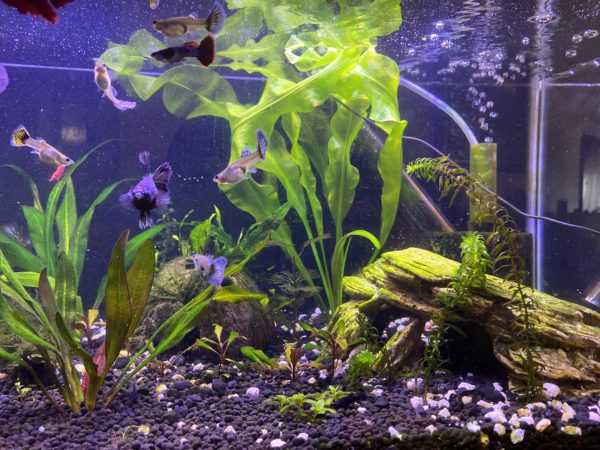
If you’re supporting a Betta fish in a 5-gallon nano tank, stick to a single Aponogeton bulb for décor.
One bulb may quickly develop up to 40 leaves, each of which may measure up to an inch in length, demanding a vast amount of land for this plant. Make careful to space your plants 2 or 3 inches apart if you’re planting multiples.
Facts About Aponogeton Ulvaceus
- From a single stem, a single root may produce more than 40 leaves 30-60 cm long.
- Apogeton flowers spread out and consume everything in their path since they develop so quickly and for such a long period. Consequently, one or two aponogeton blooms in your aquarium may be able to act as a waste collecting system.
- Aponogeton is so popular with Betta fish that they’re often called Betta bulbs.
- Aponogeton ulvaceus comes in various varieties, some of which need a latent period during which the root does not come from leaves to flourish.
- Scavengers and detritus eaters benefit from the dead leaves that fall off an aponogeton bulb because they offer a rich food source.
- Aponogeton bulbs are endemic to Madagascar, although they may also be found in regions of Africa, Asia, and the Pacific Ocean.
- The leaves may easily reach a length of more than 12 inches on average.
- Since the leaves of Aponogetons are so thick and dense, aquarium inhabitants will have plenty of hiding locations if they are placed in an aquarium. It is particularly true given how thick and dense the leaves are.
- They keep the ammonia and nitrate levels in the aquarium in balance.

Are Aponogeton Ulvaceus Right for You?
Aponogeton bulbs may be grown in a small aquarium with the use of liquid carbon. However, this is not recommended. When you use liquid carbon to feed your nano tank, you will see no decrease in the growth of the flower, and you will also notice a drop in the number of different algae species in your tank.
Plants that are a good fit for beginners should meet the following criteria:
- Must tolerate low light conditions
- No products found., often have inadequate lighting for plants that require strong lighting. Low intensity lights hit two birds with one stone: reduction of algal bloom, and lower wattage.
- Must be able to thrive without carbon dioxide supplementation
- Beginner plants must be able to thrive in what’s called a “low-tech planted tank,” which basically refers to tanks that don’t have elaborate carbon dioxide dosing equipments for accelerated plant growth.
FAQs
Do I Need to Prune Bulbs?
Bulb plants can grow unwieldy and can make smaller tanks feel quite cramped. Fortunately, you can prune them to your liking by cutting the stems as close to the bulb as possible. By doing so, you ensure that there will be minimal rotting.
What Does Resting a Plant Mean?
For beginners or even intermediate tank owners, resting a plant may seem strange, but a lot of aquarists do this because bulb plants, during the dry season, have their bulbs out of the water and their leaves exposed to air. This kills the leaves, but prepares the plant for the rainy season. Obviously, in home aquariums, the season remains virtually the same throughout the year. The leaves of your bulbs won’t die, which, while it might sound like a good thing, also entails that you need to feed your plants as the nutrients stored in the bulb get depleted.
To rest your bulb, remove it from the tank and remove all the leaves and roots. Place it in a bag of damp sand and leave it in a cool, dry, and dark place for around two months. This is best done during the winter. After this, you can safely replant it.
What Is the Pace of Aponogeton’s Growth?
However, there is one caveat: given the right conditions, the aponogeton ulvaceus may grow pretty fast, reaching up to 1 foot in a month.
Is CO2 Required for Aponogeton to Grow?
Despite its diversity, Aponogeton ulvaceus can thrive in almost every light scenario, from low to high, and it does not need the additional CO2.
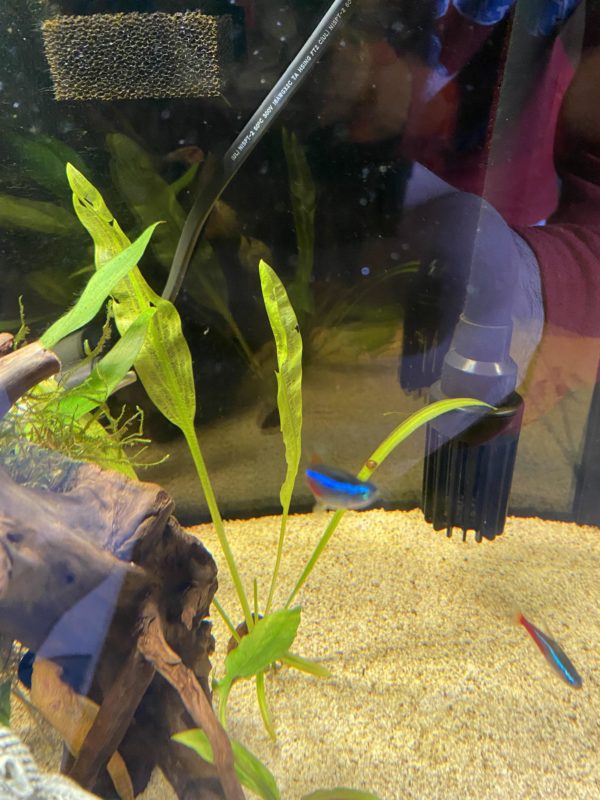
What Is the Most Effective Method for Getting Aponogeton to Flower?
The blooms may go to seed on their own but rubbing two blossoms together will guarantee that they are pollinated.
Is There a Way to Distribute Aponogeton?
If you have a flowering Aponogeton Crispus plant, you may use the seeds to duplicate it.
Are Goldfish Able to Eat Aponogeton?
Because Aponogeton plants are bulbous, the most challenging part of the procedure is likely to keep the bulb planted long enough for the roots to embed in the substrate fully.
Conclusion
The aponogeton ulvaceus is an elegant, fast-growing plant perfect for beginners and experts alike. If you want a plant that will thrive even without elaborate setups while providing additional nutrient export and shelter for fish, then the aponogeton ulvaceus is a perfect fit.
No related posts.
